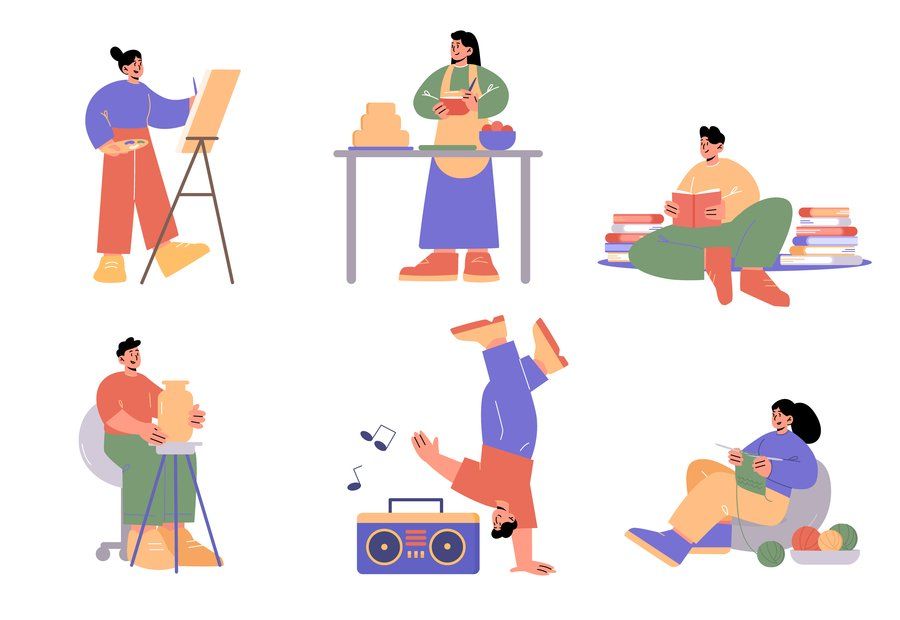Why Workplace Diversity Is Important For Every Organisation

An organisation that is committed to a diverse workforce, therefore, is one that aims to harness a pool of individuals with unique qualities.
While the traditional notion of workplace diversity may refer to representations of various races, genders and religious backgrounds, today’s concept of workplace diversity is all-encompassing. Aside from these variables, considerations are also made on personality, age, cognitive style, skillset, education, background and more.
The focus of workplace diversity now lies on the promotion of individuality within an organisation, acknowledging that every person can bring something different to the table.
An organisation that is committed to a diverse workforce, therefore, is one that aims to harness a pool of individuals with unique qualities, seeing this combination of differences as a potential for growth rather than opportunities for conflict. Attached to this commitment is also an intention to nurture and develop the potential of each individual.
So what is it about diversity that can give organisations an edge? Here are several advantages of having a diverse workforce:
1. Various opinions and perspectives
Employees with different background and experiences will bring together a variety of perspectives, thereby evoking alternative solutions and approaches when discussing a topic or issue. If managed well, the strengths and best insights of every individual can be harnessed to heighten productivity and deliver better results.
According to Claudia Cadena, director of strategic human capital management at SapuraKencana Petroleum Bhd, the composition of a team will dictate its potential for success. There needs to be a mix of capabilities to ensure that essential components and skills from strategic planning, execution, follow up to communication abilities and conflict resolution are present.
“At times we overlook the need for diversity given the pressures that a limited pool of resources puts in organisations. However, if we give in to this pressure, we will ultimate suffer the consequences of having a workforce composed of individuals that can only see things from the same perspective and are unable to contribute different points of view or alternatives due to their limited and similar background, exposure and experience,” adds Cadena.
This amalgamation of diverse individuals also sets the stage for creativity as different ideas can be tested against one another, and new ones may be birthed. Employees stand to experience more personal growth in an environment where they are exposed to differences in culture, opinions and ideas.
“The more you know, the more you know you don’t know,” goes the Aristotelian saying. The following can is also be said: The more you know, the better your capacity to test and refine your own perspectives and opinions.
2. Growth of employees
Employees stand to experience more personal growth in an environment where they are exposed to differences in culture, opinions and ideas.
“The more you know, the more you know you don’t know,” goes the Aristotelian saying. The following can is also be said: The more you know, the better your capacity to test and refine your own perspectives and opinions.
Employers will have to improve their ability to adapt to different circumstances in a diverse environment. They have to work through differences in personality, culture and background. Underlying ethno-centric notions may finally be brought to the fore and confronted as they learn to work with different styles and cultures.
3 Unity of diverse strengths
Diversity also presents the opportunity to unite specific strengths to the advantage of the organisation. As every person has different skills and possesses varying strengths, these can be combined for greater performance and productivity. Technical strengths in one individual can be united with the management strengths of another, and the sales strength of yet another.
Likewise, the cultural expertise of diverse individuals can be leveraged for the benefit of the company. Especially for global organisations, diversity in a workforce can optimise an organisation’s ability to meet the needs of each market. Representatives of specific demographics can be paired with clients of the similar backgrounds, helping clients feel more comfortable and sense an affinity with the employee, and thereby, the organisation.
4. Makes company attractive
From the marketplace perspective, a company that promotes workplace diversity and an inclusive work environment adds to its attractiveness as an employer.
A work place that is open to exploring new ideas and styles is especially appealing for the adventurous open-minded employees of Generation Y.
If an organisation makes it known that they focus on what individuals can bring to the table more than the candidate’s socio-economic background, ethnicity and the like, they are more likely to attract a diverse range of applicants.
5. The schedule advantage
There is also a practical advantage in having a diverse workforce. As individuals have their unique time commitments, having a varied group helps ensure that work tasks can be fulfilled at all times of the year.
Power generation company Malakoff Corp Bhd ensures that various races are represented particularly in their roles that involve shift work, as pointed out by Siti Hajar Mohd Dahlan, AVP of human resources. Acknowledging that various ethnicities and religions have different celebrations they adhere to, making sure they have a diverse group of employees ensures there is a workforce across different festival periods during the year.
If managed well, the strengths and best insights of every individual can be harnessed to heighten productivity and deliver better results.
THE CHALLENGES OF DIVERSITY
There are, however, natural obstacles to embracing and implementing diversity in an organisation. Feel good images of effortless synergy, the harmonious combination of different perspectives and a melting pot with a fantastically delicious mix of ingredients may be easy enough to talk about. However, we would be ignoring the challenges firstly of advocating diversity and then managing it in a manner than ensures it is a strength, and not a human resource and operational nightmare.
Earlier this month, I sat down with Victoria Martin, senior director of diversity and inclusion (AMEA and APAC) at AIG, to discuss some of the obstacles to establishing and harnessing the power of diversity. The goal, according to Martin, is to create an environment where every employee has opportunities to be successful and where their differences are leveraged for the success of the organisation. The challenge, she says, is “the issue of inclusion”. <
OVERCOMING MUSCLE MEMORY
Martin identifies “muscle memory” as one of the main obstacles to workplace diversity, referring to the attitude that says “This is how it has always been done. Why change it?”
Hidden biases form a major component in the formation of this “muscle memory”. Subconsciously, every person has a tendency to draw on their hidden biases when making decisions about who they think will be the best candidate for a particular role or opportunity. They may favour people of a particular race or educational background, gender or individuals of a certain a personality type. A quick glance at the leadership composition of an organisation can reveal predispositions that they are inclined towards.
“It’s not intentional,” Martin consoles. “It’s just this feeling that I’m more comfortable with people like me.” She advises that people, especially managers, must be aware of their personal biases and understand that they may be preventing them from considering other possibilities.
CLASH OF APPROACHES
There is also the very real issue of differences in perspectives leading to a clash of approaches. Culture, personality and background differences can erect social divisions between employees that they need to recognise and overcome. Naturally, this can present disruptions when working in teams as individuals learn to adapt and understand on another.
However, this can turn to an advantage if individuals recognise that different, sometimes conflicting ideas, are important to make sure a team does not have tunnel vision. Martin sees it as a “dynamic tension” that can bring the best results.
IMPLEMENTING DIVERSITY
In implementing diversity within an organisation, there is no one-size-fits-all ratio of optimal differences, as this will vary from company to company depending on needs and dynamics.
The starting point, therefore, is to first define the type of diversity that your organisation needs to succeed. Identify what is important for your organisation and then set the appropriate goals and measures so that employees understand what is needed to succeed in this endeavour.
Different companies adopt different approaches. AIG adopts a target-setting approach in relation to gender and ethnic representations at senior levels of the company. Malakoff reviews its diversity mix on an annual basis at its manpower planning meeting, discussing talent needs with heads of divisions and departments. Quota systems are an option as well; however, a danger here is that hiring managers can sometimes feel pressured to recruit for the sake of diversity more than talent.
Cadena of SapuraKencana points out that while every organisations’s diversity requirements are different, communication is crucial across the board. “Leaders should be made aware of the reasons behind the importance of achieving this diversity mix,” says Cadena. This ensures not only understanding of the goal, but will also lend the essential perspective and context to their everyday decision-making.
CREATING A CULTURE OF DIVERSITY
Internally, the culture of the organisation should echo this commitment to diversity. Foster an appreciation for diverse individuals, and encourage teamwork and collaboration.
This can be ingrained into the company culture by embedding diversity within the company’s value system. Alliance Bank Malaysia, for instance, integrates its diversity commitment into its core values. “The values of Respect (“We are fair in all matters, always listening and valuing the contributions of each individual”) and Teamwork (“We are a champion team, not a team of champions”) succinctly encourages each of our employee to embrace diversity in the workplace,” says Chew Siew Suan, executive vice-president and head of group human resource.
As diversity involves the recognition of the strength of individuality, and the combination of differences, organisations will strengthen its diversity call by giving its employees equal opportunity for career development. This may involve internal training programmes and putting in measures to build the internal talent pipeline, such as providing them with the tools, resources and opportunities to plan their own career path and reach their career goals.
WORKING WITH A DIVERSITY PERSPECTIVE
Implementing a diversity mind-set into decision making will help to support diversity. For instance, when discussing internal talent, have a group participate in this discussion, and assess not only talent in your own sphere but look at talents across the organisation. “This is because you’re not only looking for talents for your own team, but for the organisation as a whole,” Martin advises.
Similarly, in the recruitment process, expand the pool of talent you are considering. Post vacancies both internally and externally. Commit to interviewing diverse candidates so that hiring managers get to consider all possibilities.
Also, include diverse perspectives in the selection process. Have interview sessions with a diverse panel, as opposed to scheduling the candidate to meet different managers at different times. The advantage of this is that the panel will hear the same answers at the same time in the same context. In doing so, their perspectives lend to better comparisons.
In making a decision on recruitment and who to give growth opportunities to, AIG’s Martin says that the impact of bias and stereotypes can be reduced by shifting the focus from the specific type of people you require, to the skills necessary. When considering candidates for a position, managers should first identify the specific skills needed by an individual to fulfil that role. In focusing on the skillset required rather than the type of person the manager would like, this helps managers to think from a diversity perspective.
“We challenge managers to think of diversity as broadly as possible,” says Martin. “Consider individuals who have worked in different countries, or manage with a transformational style rather than a transactional style”. This way, the chances of recruiting a diverse range of individuals increases.
As the geographical divisions of the world become increasingly irrelevant and organisations are poised more than ever to service a global community, the advantages of a diverse workforce become especially pertinent. The question to ask is no longer whether diversity is required, but what kind of diversity is needed in every organisation, and how diversity is best managed in the organisation’s particular environment.
In doing so, a mind-set change is often required, as biases and stereotypes can impede us from viewing the full potential of differences. But instead of proceeding always on auto-pilot without questioning our underlying beliefs, perhaps turn on your mind’s manual mode. Take some time to examine the diversity composition and diversity needs of your organisation. It could be the secret to taking your company to the next level.
Personal





